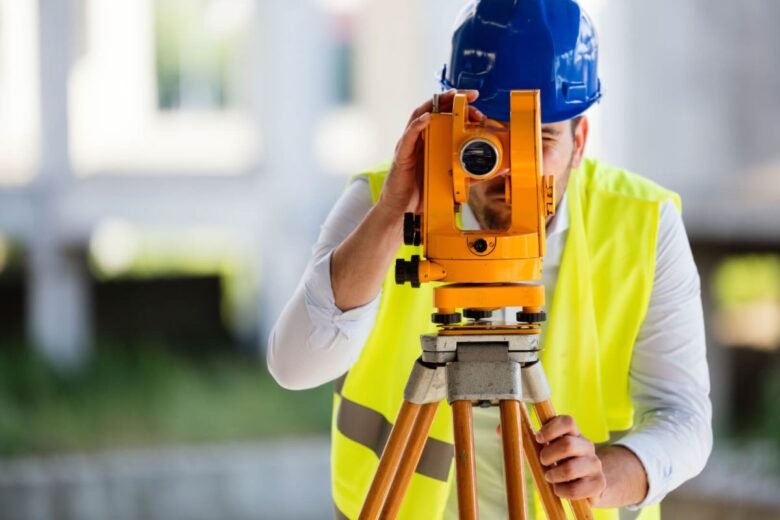Cadastral surveys are a fundamental component of land administration, providing essential data for legal documentation and property rights. This comprehensive guide aims to elucidate the concept of cadastral surveys, their legal significance, and the implications they hold for land ownership and real estate development.
Understanding Cadastral Surveys
Definition and Purpose of Cadastral Surveys
Cadastral surveys are specialized surveys that aim to determine the boundaries of land parcels. They involve the precise measurement and mapping of land features, including natural elements and constructed property lines. The primary purpose of a cadastral survey is to establish legal boundaries and ownership of land to prevent disputes and provide clear, documented proof of property rights.
The results of these surveys are typically illustrated in a cadastral map, which delineates property boundaries and identifies ownership. These maps serve not just as records of land ownership, but also as vital documents for transactions, zoning, and land development plans. Furthermore, cadastral surveys play a crucial role in urban planning and resource management, as they help local governments make informed decisions about land use, infrastructure development, and environmental conservation. By establishing clear property lines, these surveys also facilitate the assessment of property taxes, ensuring that landowners contribute fairly to public services based on their land holdings.
The Process of Conducting a Cadastral Survey
Conducting a cadastral survey requires a systematic approach and involves several key steps:
- Research: Surveyors begin by gathering historical records, previous surveys, and legal documents pertaining to the land.
- Field Survey: This involves physical measurement of the land using specialized equipment such as GPS, total stations, and levels to ensure accuracy.
- Data Analysis: Surveyors analyze the collected data to identify boundaries and any potential discrepancies.
- Map Creation: A detailed cadastral map is produced, showcasing the survey results, which is then presented for approval.
- Legal Documentation: The final step involves filing the survey results with relevant authorities to solidify the official recognition of boundaries.
Each of these steps is critical to the integrity of the cadastral survey process. The research phase, for instance, not only involves examining historical land records but also engaging with local landowners and stakeholders to gather anecdotal evidence that may not be documented. This community involvement can be essential in resolving boundary disputes that may arise from unclear or contested land claims. During the field survey, surveyors must navigate various terrains and environmental conditions, which can complicate the measurement process. As technology evolves, the integration of drones and advanced imaging techniques is becoming increasingly common, allowing for more efficient data collection and enhanced accuracy in mapping. The final cadastral map, once approved, becomes a public document, accessible to all stakeholders, ensuring transparency and fostering trust in property transactions.
The Role of Cadastral Surveys in Land Ownership
Establishing Property Boundaries
One of the primary roles of cadastral surveys is to establish definitive property boundaries. This is crucial for homeowners, developers, and businesses alike, as ambiguous land boundaries can lead to disputes and litigation. By clearly mapping and documenting land parcels, cadastral surveys provide a legal framework that defines where one property ends and another begins.
This clarity in property boundaries is vital in various scenarios, including property sales, development of new projects, and in instances where land is inherited. Buyers want assurance that the boundaries are clearly established, while developers need to comply with local zoning laws and regulations. Furthermore, accurate boundary delineation can enhance property value, as well-defined land can be more appealing to potential buyers who seek to avoid future disputes.
In addition to traditional land ownership situations, cadastral surveys also play an essential role in urban planning and environmental management. As cities expand and populations grow, the demand for land increases, making it imperative to have precise boundaries to manage resources effectively. Cadastral surveys can help local governments make informed decisions about land use, ensuring that urban development aligns with community needs while preserving green spaces and natural resources.
Resolving Land Disputes
Land disputes can arise for various reasons, such as unclear property lines, historical boundary conflicts, or changes in land use. Cadastral surveys play a critical role in resolving these issues by providing objective, accurate, and verifiable data.
When parties dispute the boundaries of a property, a cadastral survey provides the necessary documentation to settle these conflicts. In some cases, the results of a survey can lead to mediation, litigation, or even changes in property ownership, underscoring the importance of having an accurate and legally recognized land survey. Moreover, the involvement of a professional surveyor can often facilitate communication between disputing parties, helping to foster a collaborative resolution rather than an adversarial one.
Additionally, cadastral surveys can serve as a historical record that may be referenced in future disputes. They document not only the current boundaries but also the methodologies and technologies used in the surveying process, which can be invaluable in understanding how land use has evolved over time. This historical context can provide insights into long-standing disputes, allowing for more informed resolutions that take into account the complexities of land ownership and use over the years.

Legal Importance of Cadastral Surveys
Legal Framework for Cadastral Surveys
The legal importance of cadastral surveys is intertwined with the legal framework governing property rights in each jurisdiction. Cadastral surveys are typically regulated by national and local laws, which outline the standards for conducting surveys, the qualifications of surveyors, and the processes for registering survey results.
This legal framework ensures that surveys are conducted professionally and that the resulting data is reliable. In many jurisdictions, a cadastral survey is a prerequisite for officially transferring property ownership, further emphasizing its role in the property transaction process. Additionally, these regulations often include provisions for dispute resolution, which can be critical in cases where property boundaries are contested. The clarity provided by a well-executed cadastral survey can prevent lengthy and costly legal battles, thereby fostering a more harmonious community environment.
Cadastral Surveys and Property Rights
Property rights are foundational to land ownership, providing individuals and entities with control over their real estate. Cadastral surveys support the establishment of these rights by documenting who owns what. This documentation not only protects individual property rights but also contributes to the broader stability of real estate markets.
Moreover, an accurate cadastral survey can enhance property values while providing legal recourse in cases of encroachment or unauthorized use of land. As property rights are recognized and registered based on cadastral surveys, it promotes a secure environment for investments in land and real estate. The implications of these surveys extend beyond mere ownership; they also play a crucial role in urban planning and development. By mapping land use and ownership, cadastral surveys inform governmental policies and infrastructure projects, ensuring that developments are in line with community needs and zoning laws. This interconnectedness between cadastral surveys and urban planning underscores their significance in shaping sustainable and organized communities.
The Impact of Cadastral Surveys on Real Estate
Buying and Selling Property
Cadastral surveys are integral to the buying and selling of real estate. When individuals or corporations seek to purchase property, a clear understanding of boundaries is necessary to ensure that they are acquiring exactly what they intend to buy. This reduces the risk of future disputes arising from unclear or disputed land lines.
In real estate transactions, a cadastral survey is often included in the due diligence process. Buyers may request a recent survey to validate property descriptions in sales contracts, providing them with peace of mind about their investment. Meanwhile, sellers are able to present credible evidence of their property boundaries, helping to streamline the sales process and avoid complications. The importance of accurate surveys cannot be overstated, as they not only protect the interests of both parties but also contribute to a smoother transaction process, fostering trust and transparency in real estate dealings.
Moreover, the role of technology in cadastral surveys has evolved significantly, with advancements such as Geographic Information Systems (GIS) and drone surveying enhancing the accuracy and efficiency of boundary determinations. These innovations allow surveyors to create detailed maps that can be easily shared with potential buyers and sellers, further demystifying the complexities of property lines and ownership. As a result, the integration of technology into cadastral surveys has become a vital component in modern real estate transactions, making it easier for all parties involved to understand the nuances of property ownership.
Land Development and Zoning
For developers and urban planners, cadastral surveys are pivotal in guiding land development and zoning efforts. These surveys provide essential data on land use, topographical features, and existing infrastructure. With accurate information, planners can make informed decisions about land development, zoning amendments, and environmental impact assessments.
Furthermore, by adhering to zoning laws that are based on precise cadastral surveys, developers can ensure that their projects comply with local regulations, which minimizes the risk of legal challenges that could halt or delay construction. This compliance is crucial not only for the success of individual projects but also for the sustainable growth of communities. Accurate cadastral data helps to identify the best uses for land, ensuring that developments align with community needs and environmental considerations.
Additionally, cadastral surveys play a significant role in the assessment of property taxes and public services. By providing a clear picture of land ownership and usage, these surveys help local governments allocate resources more effectively and ensure that tax assessments are fair and equitable. This transparency in land management not only benefits the municipality but also enhances community trust in local governance, as residents can see that their tax dollars are being utilized in a manner that reflects the true value and use of their properties.

Future Trends in Cadastral Surveys
Technological Advancements in Cadastral Surveys
The field of cadastral surveying is experiencing significant technological advancements, particularly with the integration of Geographic Information Systems (GIS), drones, and advanced satellite imaging. These technologies enable surveyors to collect and analyze data more efficiently, improving the accuracy and reliability of surveys.
As these tools become more widely available and affordable, the quality of cadastral surveys is expected to improve, making them accessible to a broader range of stakeholders, including private landowners and small developers.
The Role of Cadastral Surveys in Sustainable Land Management
The growing emphasis on sustainable land management practices highlights the critical role of cadastral surveys in planning and maintaining ecological integrity. Accurate land surveys help identify suitable areas for development while protecting ecologically sensitive regions.
By integrating cadastral data with environmental assessments, land planners can make more informed decisions that balance economic development with environmental protection, thereby supporting sustainability goals in local communities.
In conclusion, cadastral surveys are an essential element of land management that contribute significantly to legal security, dispute resolution, and efficient land use. Understanding their importance not only aids individuals in navigating property ownership but also promotes equitable and sustainable land practices in communities globally.
More to Read : Understanding a Contour and Detail Survey: What It Covers


